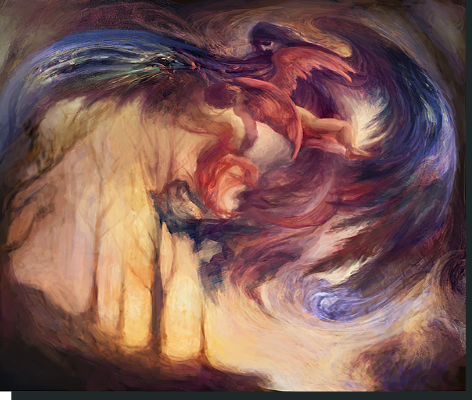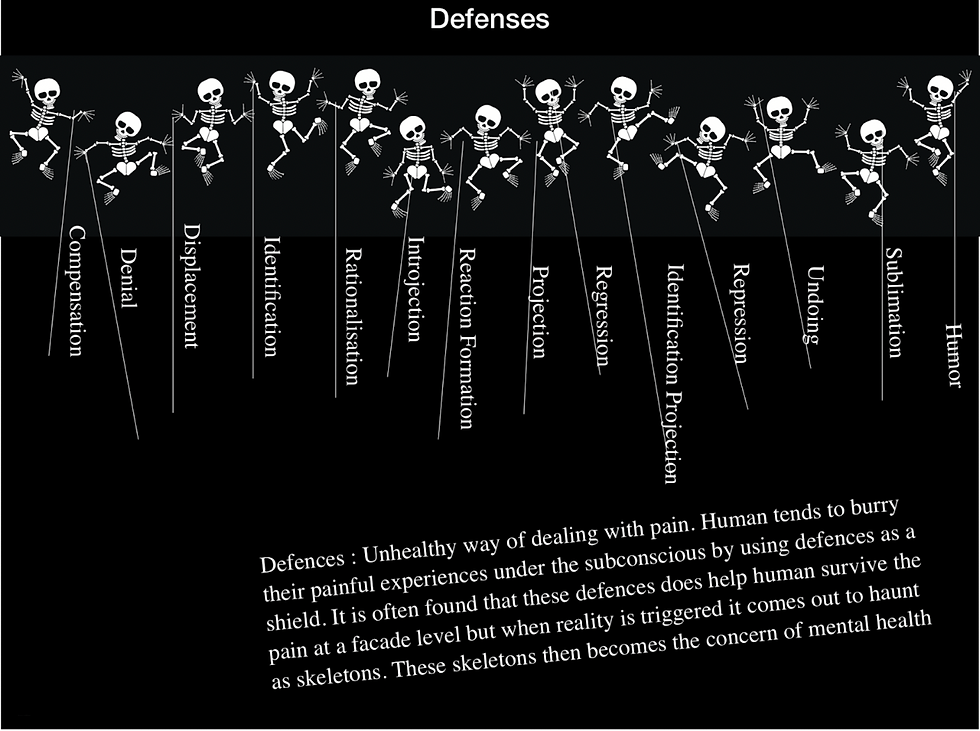Sigmund Freud was an Austrian neurologist and the founder of psychoanalysis, a method for treating mental illness and understanding the human psyche. He was born on May 6, 1856, in Freiberg, Moravia, and died on September 23, 1939, in London, England. Some of his most influential theories and works, including the ones you mentioned. Here's a more comprehensive overview:
1. "Studies on Hysteria" :(1895)
Co-authored with Josef Breuer, focusing on the use of psychoanalysis for treating hysteria.
2. Topographical Model of the Mind: (1899)
Introduced in "The Interpretation of Dreams" (1899), Freud proposed this model to describe the features of the unconscious, preconscious, and conscious parts of the mind.
3. "The Interpretation of Dreams" : (1900)
Freud's seminal work introducing the concept of the unconscious mind and dream interpretation.
4. "The Psychopathology of Everyday Life": (1901)
Analyzes everyday errors and slips, emphasizing their relation to unconscious processes.
5. "Jokes and Their Relation to the Unconscious" : (1905)
Explores humor in the context of the unconscious.
6. Psychosexual Stages of Development: (1905)
Outlined in "Three Essays on the Theory of Sexuality" (1905), this theory proposed that children pass through a series of stages centered on erogenous zones: oral, anal, phallic, latency, and genital.
7. "Totem and Taboo" : (1913)
Discusses the parallels between primitive cultures and individual psychological development.
8. "On Narcissism": (1914)
Introduces the concept of narcissism.
9. Introduction of the Theory of Instincts: (1915)
Around 1915, Freud introduced his theory of instincts, differentiating between life instincts (Eros) and death instincts (Thanatos).
10. "Beyond the Pleasure Principle" : (1920)
Introduces the notion of the death drive.
11. "Group Psychology and the Analysis of the Ego" : (1921)
Explores group dynamics and their influence on individual psychology.
12. Structural Model of the Psyche: (1923)
Introduced in "The Ego and the Id" (1923), Freud describes the id, ego, and superego as key components of the human psyche.
13. "The Future of an Illusion" : (1927)
Discusses religion’s role in society and individual psychology.
14. "Civilization and Its Discontents" : (1930)
A critical examination of civilization’s impact on individual psychology.
15. "Moses and Monotheism": (1939)
Freud's final work, applying psychoanalytic theory to culture and religion.
Freud's contributions span a wide range of topics, please note, there is more than what is mentioned here.
Freud's final work, applying psychoanalytic theory to the figure of Moses and the origins of monotheism. This timeline shows Freud's progression from early works on hysteria and the unconscious to his later theories on instincts, the structure of the psyche, and the application of psychoanalysis to culture and religion.
Elaboration to few of his theories below:
Topographical model of the mind
Freud's theories on human behavior, personality, and the unconscious mind have had a profound influence on modern psychology and continue to be widely studied and debated today.
One of Freud's most significant contributions to psychology was his model of the human psyche, which he divided into three parts:

The conscious mind: This is the part of the mind that we are aware of and can readily access. It includes our thoughts, perceptions, and memories.
The preconscious mind: This is the part of the mind that is just below the surface of consciousness and can be easily accessed with a little effort. It includes information that is not currently in our awareness but can be easily retrieved and brought into consciousness.
The unconscious mind: This is the part of the mind that contains information and feelings that are not readily available to us. Freud believed that much of our behavior and experience is driven by unconscious thoughts and desires.
After the development of topographical model, Freud turned his attention to the complexities of instinct theory. An Inborn Psychological representation of an inner somatic source of excitation
Instinctual Drives
Sigmund Freud, proposed that human behavior is driven by instincts, which he defined as mental representations of internal stimuli that drive a person to act in certain ways. It outlines the definitions, focus, orientation, and role in psychoanalysis for each of the three main instincts: Sexual Instincts (Libido) (Eros), Ego Instincts, and Death Instincts (Thanatos).

Eros (Life Instincts): Eros encompasses the instinct to survive, and it includes such drives as eating, breathing, and sex. The energy created by the life instincts is known as libido. For example, the desire to nurture a child could be seen as a manifestation of the life instinct, as it helps ensure the survival of the next generation.
Definition: These are the life-preserving, sexual, and procreative instincts. They include a broader concept of pleasure-seeking tendencies, not just limited to sexual desire but also encompassing other aspects related to the preservation of the species.
Focus: The focus of these instincts is on pleasure and procreation.
Orientation: They are outward-looking, directed towards objects or others.
Role in Psychoanalysis: Sexual instincts play a crucial role in psychological development and the formation of personality. Freud saw them as central to the motivations and behavior of individuals.
Thanatos (Death Instincts): On the other hand, Thanatos embodies the instinct towards aggression, self-destruction, and return to a state of calm, or, metaphorically, a return to the inorganic state from which life arose. The death instincts are often directed outwards, as aggression or violence, when they are not directed inwards, as self-harm or suicide. An example of the death instinct could be a person engaging in risky behaviors like extreme sports, which may bring a sense of peace and calm by flirting with danger.
Definition: These instincts are theorized to be toward aggression, self-destruction, and a return to an inanimate state. They represent a counterforce to the life-preserving instincts and include the drives towards destruction and a return to a state of calm.
Focus: The focus of death instincts is on aggression and self-destruction.
Orientation: They have both inward and outward orientations, manifesting as self-destructive behavior and aggression towards others.
Role in Psychoanalysis: Death instincts reflect the struggle between the instinct to live and the drive to return to a state of calm, inanimate existence. Freud saw this as a fundamental tension in human psychology.
Ego Instincts: From 1905 on, Freud maintained a dual instinct theory, until 1914, with the publication of On Narcissism, freud had paid little attention to ego instincts. These are concerned with self-preservation and individual maintenance. They are inward-looking, focusing on the self, and deal with responding to external threats, adapting to the environment, and ensuring survival.
Definition: These instincts are related to self-preservation and the maintenance of the individual. They include responses to threats, adaptation to the environment, and ensuring individual survival.
Focus: The focus is on self-survival and maintaining individual integrity.
Orientation: Ego instincts are inward-looking, focusing on the self.
Role in Psychoanalysis: These instincts are concerned with dealing with the external world, ensuring survival, and coping with reality. They are seen as crucial for the individual's interaction with their environment.
It's important to note that Freud's theories, including his ideas about instinctual drives, have been controversial and are often critiqued or rejected by modern psychologists. Nonetheless, they have had a significant influence on the development of the field of psychology.
Structure model of the Psyche:

Sigmund Freud's theory of psychoanalysis posits that the human psyche is divided into three parts: the id, the ego, and the superego. The ego is the part of the psyche that mediates between the impulses of the id and the moral constraints of the superego, striving to meet the demands of both.
The ego is responsible for a person's sense of identity, rational thinking, and decision-making. According to Freud, the ego is not a fixed entity but is rather a dynamic structure that is constantly adapting to the demands of the external world.
However, the ego's efforts to balance the demands of the id and the superego can create inner conflicts and psychological tension. To cope with this tension, Freud proposed that the ego employs various defense mechanisms, which are unconscious processes that protect the ego from anxiety and discomfort.
Some common defense mechanisms include:

Repression: This involves pushing unacceptable thoughts or feelings into the unconscious mind.
Denial: This involves refusing to accept or acknowledge reality.
Projection: This involves attributing one's own unacceptable thoughts or feelings to another person.
Rationalization: This involves creating a rational or logical explanation for a behavior or feeling that is actually based on emotional reasons.
Displacement: This involves redirecting unacceptable feelings or impulses towards a more acceptable target.
Sublimation: This involves redirecting unacceptable impulses towards socially acceptable activities, such as creative work or sports.
Freud believed that defense mechanisms were a normal and necessary part of the human psyche and served to protect the ego from overwhelming anxiety and distress. However, excessive reliance on defense mechanisms could lead to neuroses and psychological disorders. Overall, Freud's theory of the ego and defense mechanisms offers a complex and nuanced understanding of how the human psyche functions, and has had a lasting impact on the field of psychology.
Note:
Freud's theories have been both influential and controversial. While some of his ideas have been widely accepted, others have been criticized for their lack of empirical support and for being overly focused on sexual and aggressive instincts. Nevertheless, Freud's work has had a lasting impact on the field of psychology and continues to influence how we understand the human mind and behavior.

Comments